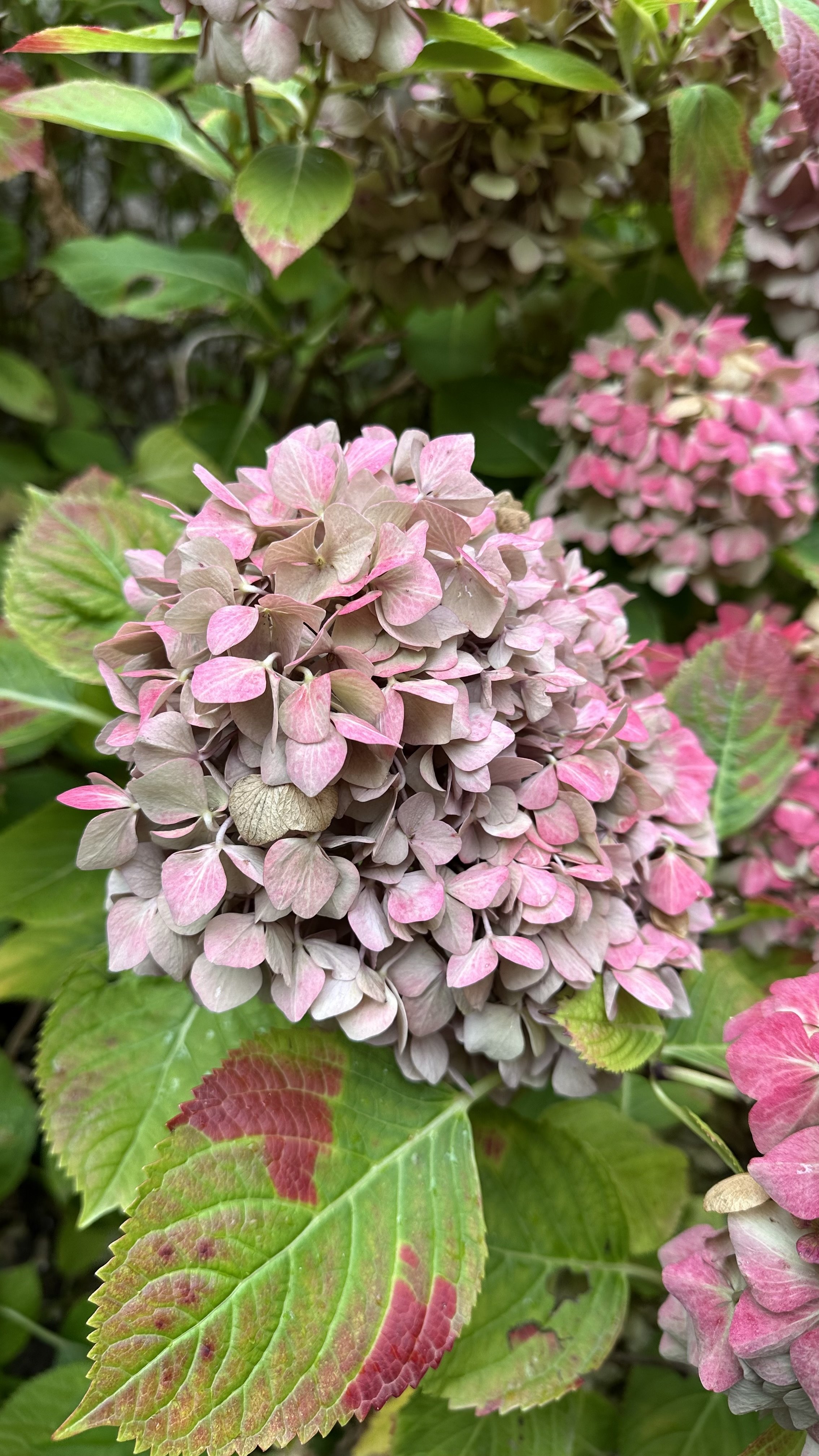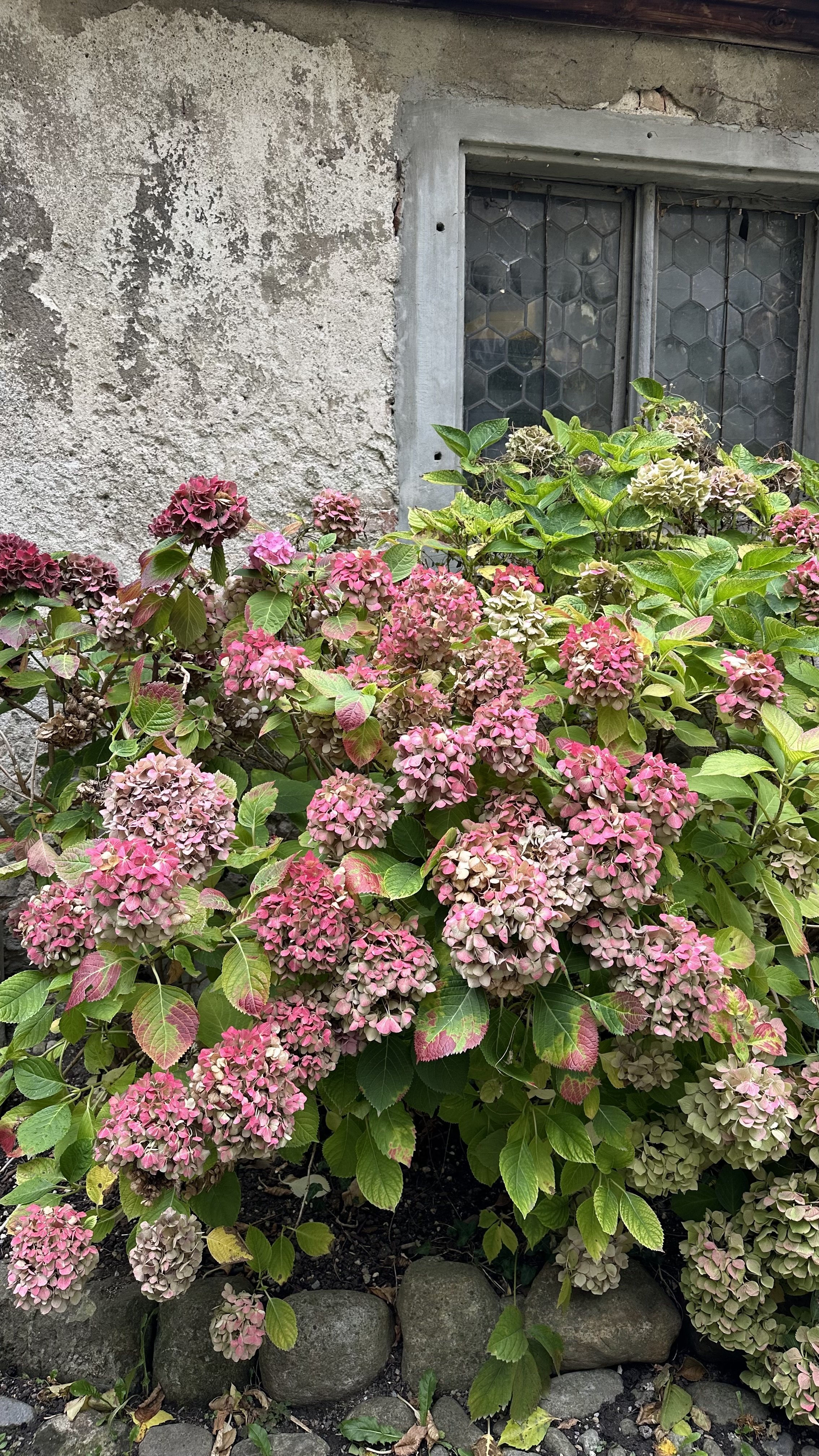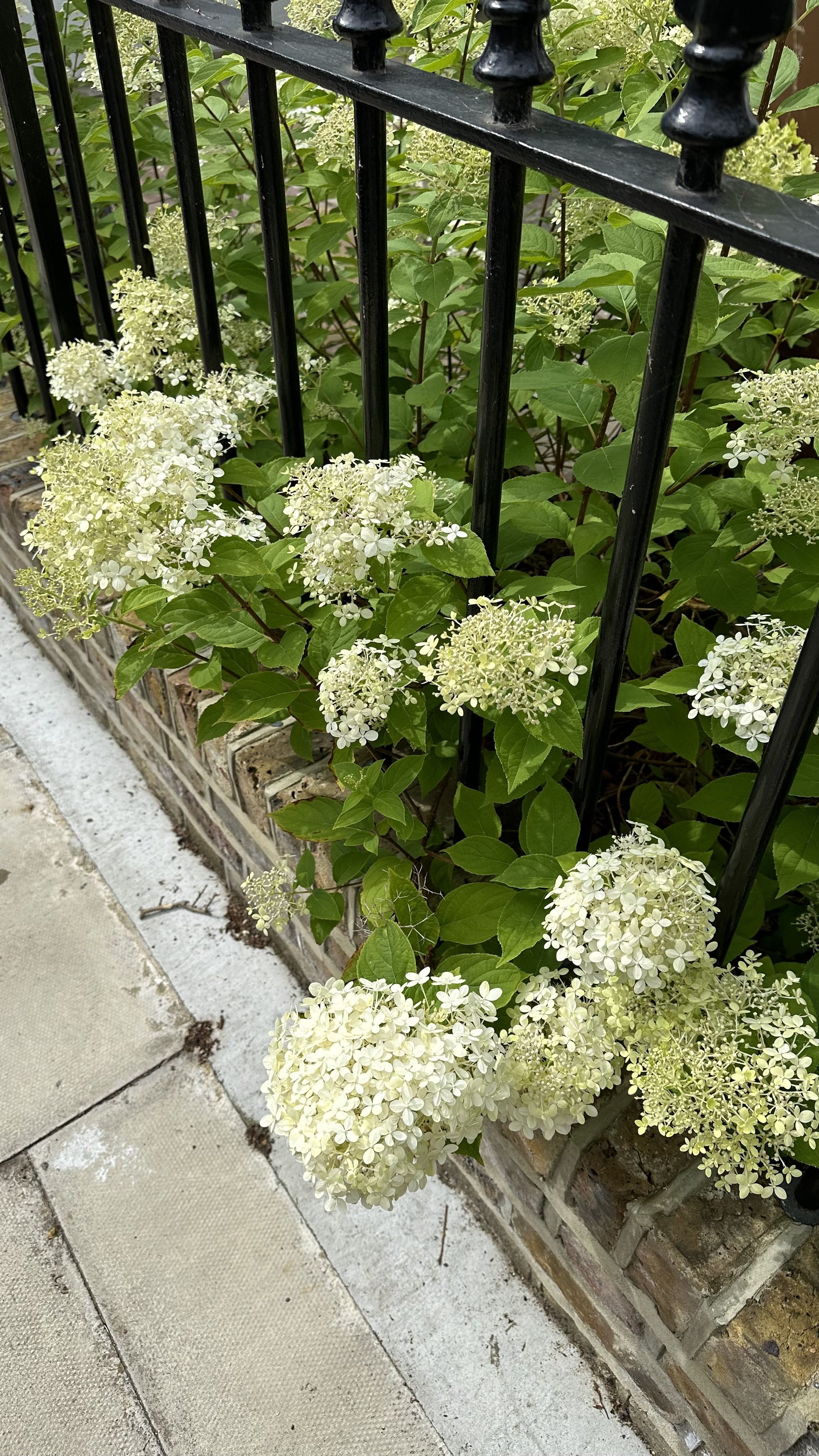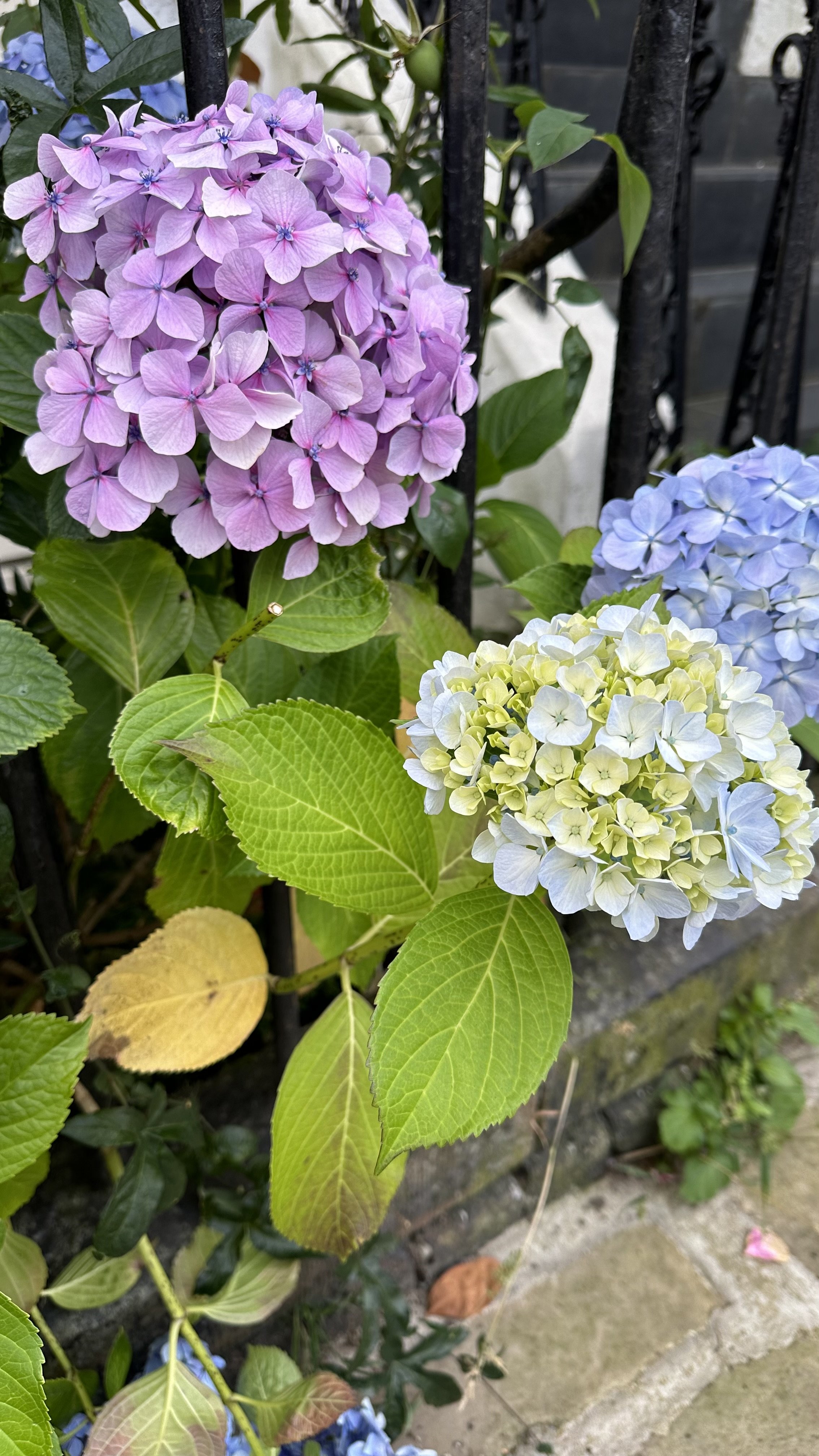The Best Companion Plants for Hydrangeas
This article has links to products that I may make commission from.
Exploring the world of hydrangeas is a journey into a realm of vibrant colors and diverse textures.
These popular garden favorites captivate with their stunning blooms, but their charm is elevated when paired thoughtfully with the right companion plants.
This guide is dedicated to unraveling the secrets of successful hydrangea companion planting.
We'll navigate through choices ideal for different garden conditions — from sun-drenched spaces to shaded nooks — and offer insights into creating a visually appealing and ecologically balanced garden.
Learn about the perfect partners for your hydrangeas, from ground covers to towering grasses, and discover essential tips to avoid common planting pitfalls, ensuring a lush, flourishing garden where hydrangeas and their companions thrive in unison.
To learn more about growing hydrangeas, check out my guide:
Hydrangea companion Plants for Full Sun
Hydrangeas are versatile, flourishing in various lighting conditions, from full sun to partial sun.
In these environments, it's essential to pair them with plants that not only tolerate similar light levels but also complement their growth and bloom patterns.
Japanese Forest Grass (Hakonechloa macra):
This ornamental grass is a perfect match for hydrangeas in sunnier spots.
It thrives in full sun to partial shade, providing a striking textural contrast with its flowing, soft leaves.
The golden or variegated varieties of Japanese Forest Grass can brighten the area around hydrangeas, creating a visually appealing garden space.
Here is where I recommend buying Japanese Forest Grass:
Coral Bells (Heuchera):
Known for their vibrant and varied foliage colors ranging from deep purples to bright greens and reds, Coral Bells are an excellent choice.
They not only tolerate full sun to partial shade but also add a splash of color even when not in bloom, enhancing the overall appeal of your hydrangea-centric garden.
Here is where I recommend buying Coral Bells:
Blue Fescue (Festuca glauca):
This small, clump-forming grass offers stunning, icy blue foliage that provides a beautiful contrast against the lush green and floral hues of hydrangeas.
It's particularly effective in creating a color contrast with pink or blue hydrangea blooms.
Here is where I recommend buying Blue Fescue:
Daylilies (Hemerocallis):
These perennials are robust and adaptable, thriving in similar conditions as hydrangeas.
With a variety of colors available, they can complement the hydrangea blooms while adding their own unique flair during their blooming season.
Here is where I recommend buying Daylilies:
Shrub Roses:
Offering a classic garden look, shrub roses can be paired with hydrangeas for a traditional, yet stunning garden display.
They thrive in full sun and can handle partial shade, making them a flexible companion.
The varied colors of roses can complement or contrast with hydrangea blooms, depending on your garden design.
Here is where I recommend buying shrub roses:
To learn more about growing roses, check out my guide Companion Plants for Roses: The Perfect Partners.
Sedum (Stonecrop):
These succulents are excellent for adding texture and interest.
They handle full sun well and can thrive in the same well-draining soil conditions that hydrangeas prefer.
Their thick, fleshy leaves and late-season blooms offer a different visual element in the garden.
Here is where I recommend buying sedum:
To learn more about growing sedum, check out my guide How to Propagate Sedum.
Hydrangea companion Plants for Shade
Hostas:
These leafy perennials are a classic choice for shady gardens.
With a wide range of leaf sizes, colors, and patterns, hostas can provide a beautiful backdrop or understory to hydrangeas.
Their lush foliage in various shades of green, blue, and even variegated patterns create a rich tapestry of texture and color in the shade garden.
Here is where I recommend buying hostas:
To learn more about growing hostas, check out my guide Hosta Care in Winter to Ensure Springtime Splendor.
Ferns:
Ferns are an excellent choice for adding texture and depth to a hydrangea planting.
Their delicate fronds provide a soft, feathery contrast to the broader leaves of hydrangeas.
Varieties like the Lady Fern or Japanese Painted Fern can introduce different shades and patterns, enhancing the visual interest beneath the hydrangeas.
Here is where I recommend buying ferns:
Astilbe:
Known for their feathery, plume-like flowers, Astilbes are wonderful for adding a bit of height and color to the shade garden.
Their blooms, in shades of white, pink, and red, rise above fern-like foliage and can beautifully complement the larger blooms of hydrangeas.
Here is where I recommend buying astilbe:
Bleeding Hearts (Dicentra):
With their unique, heart-shaped flowers, Bleeding Hearts are a charming addition to the shady hydrangea garden.
They bloom in spring, offering an early burst of color, and their fine-textured foliage continues to add interest throughout the growing season.
To learn more, check out my guide: How to Grow Bleeding Heart.
Here is where I recommend buying bleeding hearts:
Hellebores (Lenten Rose):
These early bloomers can provide color and interest in late winter to early spring, often flowering when the hydrangeas are still dormant.
Their low-growing, evergreen foliage remains attractive throughout the year, making hellebores an excellent groundcover option around hydrangeas.
Here is where I recommend buying hellebores:
Solomon’s Seal (Polygonatum):
With its arching stems and dangling, bell-shaped flowers, Solomon’s Seal adds both height and a unique architectural element to the shade garden.
It pairs well with hydrangeas, offering a contrasting form and a more delicate floral display.
Here is where I recommend buying Solomon’s Seal:
Hydrangea companion Plants for Ground Cover
Blue Fescue (Festuca glauca):
This clumping, ornamental grass is known for its striking blue foliage.
It's an excellent choice for adding color contrast at the base of hydrangeas.
Blue Fescue thrives in both full sun and partial shade, making it versatile for different hydrangea settings.
Its drought tolerance and easy-care nature make it a low-maintenance option.
Here is where I recommend buying Blue Fescue:
Vinca Minor (Lesser Periwinkle):
A classic ground cover, Vinca Minor, is valued for its glossy green leaves and delicate blue or purple flowers.
It spreads effectively, covering the ground beneath hydrangeas and providing a lush, green backdrop for their blooms.
It's particularly effective in shady areas, where it can thrive under the canopy of hydrangea foliage.
Here is where I recommend buying Vinca Minor:
Pachysandra:
Ideal for shady areas, Pachysandra is a robust evergreen ground cover.
Its dense mats of glossy leaves provide a neat, uniform look around hydrangeas.
In early spring, it produces small, inconspicuous flowers, but its primary appeal lies in its foliage.
Here is where I recommend buying Pachysandra:
Ajuga (Bugleweed):
Ajuga is known for its attractive, often variegated leaves and spikes of blue flowers in the spring.
It spreads quickly, forming a dense carpet that can prevent weeds and protect the soil.
It's a versatile ground cover that can adapt to a range of light conditions, making it suitable for different hydrangea gardens.
Here is where I recommend buying Ajuga:
Lamium (Dead Nettle):
With its variegated foliage and small, tubular flowers, Lamium is a striking ground cover.
It's particularly effective in partial shade, where it can light up the garden floor with its silver or white-marked leaves.
It's a low-growing plant that spreads at a moderate rate, making it easy to control around hydrangeas.
Here is where I recommend buying Lamium:
Ornamental Grasses for Hydrangea companion Planting
Miscanthus (Maiden Grass):
This tall, elegant grass is known for its graceful, arching form.
Varieties of Miscanthus offer different sizes, colors, and textures, making it easy to find one that complements your hydrangeas.
They provide a striking backdrop or contrast, especially when their feathery plumes catch the breeze.
Here is where I recommend buying Miscanthus:
Fountain Grass (Pennisetum):
Fountain Grass adds a soft, billowing element to the garden.
Its fluffy, bottlebrush-like plumes and arching leaves create a beautiful contrast against the round, robust hydrangea blooms.
It thrives in full sun to partial shade and comes in various sizes, suitable for different garden scales.
Here is where I recommend buying Fountain Grass:
Northern Sea Oats (Chasmanthium latifolium):
Known for its distinctive seed heads that resemble oats, this grass adds both texture and a unique visual interest.
It's particularly effective in creating a natural, meadow-like feel in the garden and can grow well in a range of light conditions.
Here is where I recommend buying Northern Sea Oats:
Calamagrostis (Feather Reed Grass):
This grass stands out for its upright growth habit and feathery inflorescences.
It can add a vertical element to the garden, contrasting nicely with the more mounded form of hydrangeas.
It's a great choice for adding structure and interest to the garden throughout the year.
Here is where I recommend buying Calamagrostis:
Carex (Sedge):
While not a true grass, sedges offer grass-like foliage and are well-suited to a variety of garden conditions.
They are particularly useful for lower-growing textural contrasts and can thrive in shadier conditions where some grasses may not.
Here is where I recommend buying Carex:
Hydrangea Companion Plants For Dry, Well-Draining Soil
Sedum (Stonecrop):
Sedums are a diverse group of succulents known for their ability to thrive in dry conditions.
Their fleshy leaves and vibrant flowers in late summer and fall provide a striking contrast to the lush foliage of hydrangeas.
They are excellent for adding bursts of color and texture in the later part of the growing season.
Here is where I recommend buying Sedum:
Lavender:
With its fragrant, purple flowers and silver-green foliage, lavender is a classic choice for dryer gardens.
It thrives in full sun and well-drained soil, making it a suitable companion for sun-loving hydrangea varieties.
The height and texture contrast between lavender and hydrangeas can create a visually appealing garden space.
To learn more about growing lavender, check out my guide How to Create a Lavender Hedge.
Here is where I recommend buying Lavender:
Russian Sage (Perovskia atriplicifolia):
This hardy perennial offers a soft, airy texture with its spiky lavender-blue flowers and silvery foliage.
It's drought-tolerant and thrives in full sun, making it an excellent companion for hydrangeas in sunny, dry areas.
Here is where I recommend buying Russian Sage.
Yarrow (Achillea millefolium):
Yarrow is a resilient perennial that can handle dry conditions well.
It produces flat-topped clusters of flowers in various colors, providing a different shape and texture to complement hydrangeas.
Its fern-like foliage also adds an interesting contrast.
Here is where I recommend buying Yarrow:
Catmint (Nepeta):
Catmint is known for its long-lasting, lavender-blue flowers and aromatic foliage.
It's a hardy, drought-tolerant plant that can thrive alongside hydrangeas, adding a relaxed, cottage garden feel to the landscape.
Here is where I recommend buying Catmint:
Understanding Hydrangea Companion Planting
Importance of Companion Plants
Companion plants enhance garden aesthetics, improve growing conditions, and encourage biodiversity.
Selecting compatible companions for hydrangeas ensures a harmonious and healthy garden ecosystem.
Factors to Consider
Light Requirements: Hydrangeas thrive in full sun to partial shade. Companion plants should have similar sunlight needs.
Soil Conditions: Well-draining soil is crucial. Companions should tolerate similar soil conditions.
Growth Habit: Consider the size, shape, and growth rate of potential companions.
Seasonal Interest: Choose plants that offer color and interest throughout the year.
Hydrangea Border Ideas
Designing borders with hydrangeas can transform your garden into a stunning visual display.
When planning a border, consider the color, texture, and height of both hydrangeas and their companion plants to create a harmonious and impactful design.
Here are some ideas for creating beautiful hydrangea borders:
Creative Border Ideas with Hydrangeas
Mixed Perennial Border:
Combine hydrangeas with a variety of perennials for a border that changes and evolves throughout the seasons.
Perennials like Echinacea (Coneflower), Salvia, and Rudbeckia can add contrasting shapes and colors.
This approach creates a dynamic border with different blooms taking the spotlight at different times.
Evergreen and Hydrangea Border:
Pair hydrangeas with evergreen shrubs like Boxwood or small conifers.
This combination ensures year-round interest, with the evergreens providing a constant backdrop to the seasonal blooms of hydrangeas.
Cottage Garden Style:
For a charming, informal look, mix hydrangeas with classic cottage garden plants like Lavender, Catmint, and Roses.
This style offers a relaxed feel and a succession of blooms throughout the growing season.
Grasses and Hydrangeas:
Incorporate ornamental grasses like Miscanthus or Fountain Grass for a modern and low-maintenance border.
The grasses add texture and movement, contrasting beautifully with the more static form of hydrangeas.
Color-Themed Borders:
Create a color-themed border by choosing hydrangeas and companions with similar or complementary colors.
For instance, a blue and purple theme could include Blue Hydrangeas, Lavender, and Russian Sage.
Layered Borders:
Design a border with layers of height, texture, and color.
Start with taller plants like Joe Pye Weed or Tall Garden Phlox at the back, medium-sized hydrangeas in the middle, and lower-growing plants like Hostas or Coral Bells at the front.
Tips for Designing Hydrangea Borders
Consider Bloom Times: Choose plants with different blooming periods to ensure continuous interest in the border.
Play with Textures: Combine plants with various leaf textures and shapes for a more vibrant look.
Think About Maintenance: Choose plants with similar care needs to make maintaining your border easier.
A well-designed hydrangea border can be a focal point in your garden, providing beauty and interest throughout the growing season.
By thoughtfully selecting companion plants, you can create a border that is both beautiful and harmonious.
Hydrangea Companion Planting: What Not to Do
While hydrangeas are versatile and can be paired with a variety of plants, there are certain combinations and practices that should be avoided to ensure the health and beauty of your garden.
Here are some key points to consider:
Common Mistakes in Hydrangea Companion Planting
Avoiding Invasive Species:
It's crucial to steer clear of plants that are known to be invasive in your region.
Invasive species can quickly overtake a garden, stealing nutrients, water, and light from your hydrangeas and other plants.
Examples include certain types of ivy or bamboo.
Not Considering Water Requirements:
Pairing hydrangeas with plants that have significantly different watering needs can be problematic.
Hydrangeas generally prefer consistently moist soil.
Planting them alongside drought-tolerant plants that require less water can lead to over or under-watering one or the other.
Ignoring Soil Preferences:
While hydrangeas are adaptable to various soil types, they thrive best in rich, well-draining soil.
Planting companions that prefer very different soil conditions (like extremely sandy or heavy clay soils) can be detrimental to the hydrangeas' health.
Overlooking Sunlight Needs:
Hydrangeas and their companions should have compatible light requirements.
Avoid pairing shade-loving hydrangeas with full-sun plants, as this can stress one or both types of plants.
Planting Large Trees Too Close:
While some tree companions can be beneficial, planting large trees too close to hydrangeas can lead to competition for water and nutrients.
Additionally, large trees can suddenly alter the light conditions if they grow to overshadow the hydrangeas significantly.
Neglecting Growth Patterns:
Some plants, while beautiful, can be aggressive in their growth habits.
These might crowd or overshadow hydrangeas over time. It's important to choose companions that will coexist without dominating.
Tips for Successful Hydrangea Companion Planting
Research Plant Companions: Before planting, research the preferred conditions and growth habits of potential companions.
Consider Mature Sizes: Plan for the mature size of both the hydrangeas and their companions to ensure they have enough space to thrive.
Monitor and Adjust: Be prepared to make adjustments as your plants grow. Sometimes, what works on paper may need tweaking in reality.
By avoiding these common mistakes, gardeners can create a harmonious and thriving environment for hydrangeas and their companions, ensuring a beautiful and healthy garden.
FAQs
What are some white hydrangea companion plants?
For white hydrangeas, consider pairing with plants that offer contrasting colors or textures.
Purple and blue flowering plants like Lavender, Catmint, or Salvia can create a striking visual contrast.
For textural contrast, ferns or ornamental grasses like Fountain Grass can add depth to the garden.
Additionally, foliage plants with variegated or dark green leaves, such as Hostas or Heucheras, can provide a beautiful backdrop to the white blooms.
Can I plant hydrangeas with other shade-loving plants?
Yes, hydrangeas pair well with many shade-loving plants.
Ideal companions include Hostas, with their varied leaf patterns and colors, and Ferns, which add a delicate, feathery texture.
Other shade-tolerant plants like Astilbe, with its fluffy blooms, and Bleeding Hearts (Dicentra), known for their unique heart-shaped flowers, can also complement hydrangeas in a shade garden.
Are there any perennial companion plants for hydrangeas?
Certainly! Many perennials make excellent companions for hydrangeas.
Coral Bells (Heuchera), with their colorful foliage, are a popular choice.
Other perennials like Echinacea (Coneflower) and Daylilies can add contrasting forms and additional blooms to the garden.
Ferns and Hostas are also great perennial options, especially for adding textural diversity.
How do I choose hydrangea companion plants for full sun?
When selecting companion plants for hydrangeas in full sun, look for plants that thrive in similar conditions and offer drought tolerance.
Sedum, with its succulent leaves and colorful blooms, and Lavender, with its fragrant flowers and silvery foliage, are excellent choices.
Other sun-loving plants like Russian Sage and Yarrow can also complement hydrangeas in sunny areas.
What should I avoid planting with hydrangeas?
Avoid planting hydrangeas with invasive species that can outcompete them for resources.
Also, steer clear of plants with vastly different water or light requirements.
For instance, cacti and succulents might not be suitable companions due to their low water needs.
Additionally, avoid large trees or shrubs that might overshadow hydrangeas over time, limiting their growth and bloom potential.
The journey of gardening with hydrangeas, surrounded by their ideal companions, is both rewarding and enriching.
By choosing the right partners, from shade plants to those suited for well-draining soil, you can ensure your garden thrives in various zones and conditions.
Whether you're crafting a year-round spectacle or focusing on seasonal highlights, the harmonious combination of hydrangeas and their companions will bring unparalleled beauty to your garden.
Embrace the principles shared in this guide, and watch as your gardening endeavors flourish, creating a serene and vibrant haven that captivates through the seasons.
Want to learn more about companion planting? Check out my guides:





























































